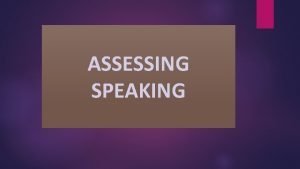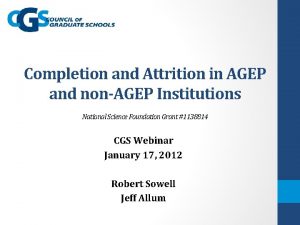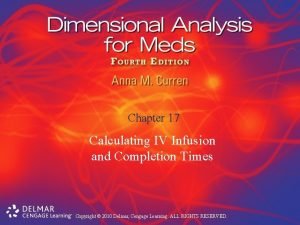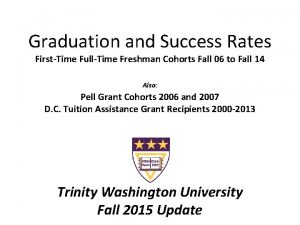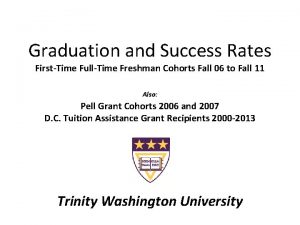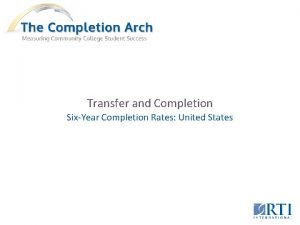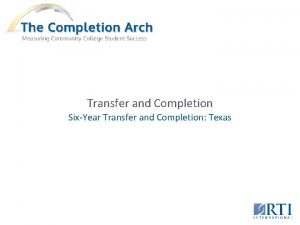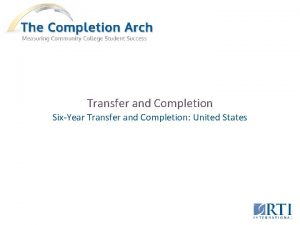Transfer and Completion Graduation Rates for FirstTime FullTime






- Slides: 6

Transfer and Completion Graduation Rates for First-Time, Full-Time Students: South Carolina

Graduation Rates for First-Time, Full-Time Students: South Carolina What Is Measured? Percentage of students who completed a degree or certificate in their first institution Who Is Counted? All first-time, full-time, degree- or certificate-seeking students enrolled in South Carolina Community Colleges who started in the fall term of 2001– 2011 What It Tells Us As of 2013, among full-time degree- or certificate-seeking students who first enrolled in a community college in fall 2009 in South Carolina Community Colleges, about 6 percent of students had graduated within 100 percent of normal time, 12 percent of students had graduated within 150 percent of normal time, and 17 percent of students had graduated within 200 percent of normal time. Graduation rates are also shown for earlier years and are broken out by gender and race/ethnicity for students graduating within 150 percent of normal time. Why It's Important Most beginning community college students intend to earn a certificate or degree, although less than half do so even after six years. The institutional graduation rates reported by Integrated Postsecondary Educational Data System is the most well known indicator of graduation rates and perhaps of all indicators of community college student success overall. Because these statistics are reported annually according to a standard formula, they can be compared over time and across states and individual institutions. A major limitation of this indicator is that it only counts first-time, full-time students who begin in the fall, but most community college students initially enroll part time (often due to family or work responsibilities) and are not included. The prevalence of part-time enrollment as well as the high rate of participation in developmental education courses that do not count toward graduation requirements have led to other indicators of community college completion for periods as long as six years.

Percentage of first-time, full-time students enrolled in South Carolina Community Colleges who completed an associate degree or certificate

Percentage of first-time, full-time students enrolled in South Carolina Community Colleges who completed an associate degree or certificate

Percentage of first-time, full-time students enrolled in South Carolina Community Colleges who completed an associate degree or certificate

Data Sources - U. S. Department of Education, National Center for Education Statistics, Integrated Postsecondary Education Data System (IPEDS). About the Data - - Graduation rates are measured at 100 percent, 150 percent, and 200 percent of normal time (the expected time to graduation). Normal time for associate degrees is two years and varies for certificates. For example, 150 percent of normal time for a one-year certificate would be measured at one and a half years, and 150 percent of normal time for an associate degree would be measured at three years. One limitation of the Integrated Postsecondary Education Data System (IPEDS) graduation rate is that only first-time, full-time students who begin in the fall are counted, but this group makes up less than half of first-time degree- or certificateseeking community college students and excludes students who initially enrolled in a different term, initially enrolled part time, or both. In addition, about one-third of students who are included in the IPEDS rate will enroll part time for at least one term and are not strictly comparable to students who are exclusively enrolled full time. Graduation rates for 100 percent and 200 percent of normal time were first collected in 2008 and are not reported by gender or race/ethnicity. Race/ethnicity: Totals include data for all students regardless of race/ethnicity. Data from the most recent year may not be final and are subject to revision.




